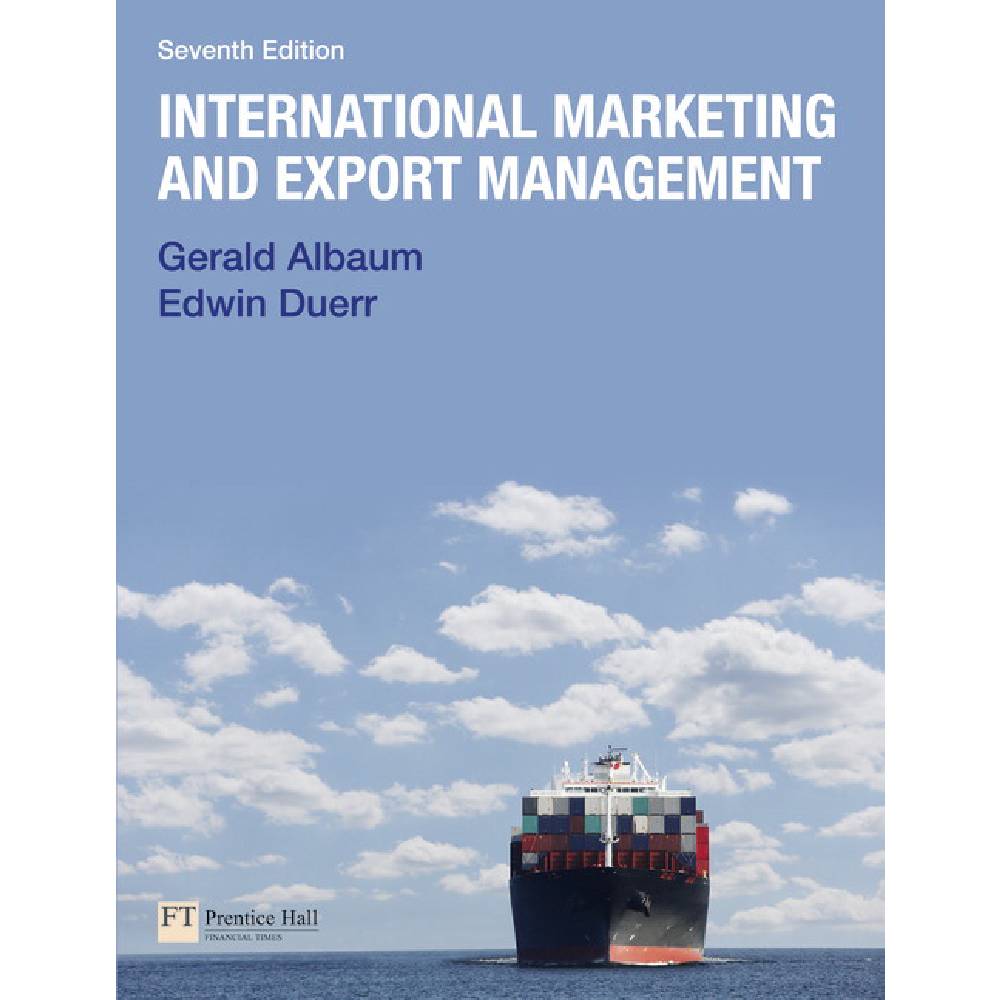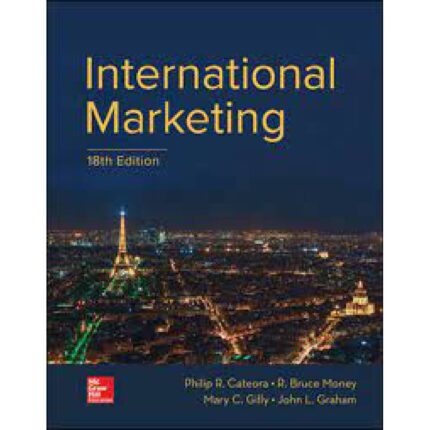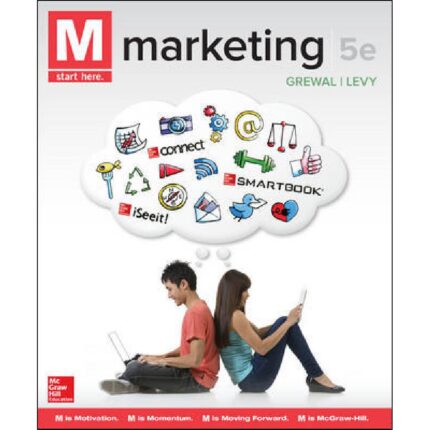International Marketing and Export Management 7th Edition by Gerald Albaum – Test Bank
ANSWERS TO QUESTIONS FOR DISCUSSION, Chapter 11
11.1 What is the meaning of the ‘anatomy of a price’ as it refers to an export price?
The anatomy of an export price is the set of factors that help determine it and the relationship among them. These factors include:
Costs.
Market conditions and consumer behaviour (that is, demand or value).
Competition.
Legal and political issues.
General company policies, including policies on financial matters, production and organization structure, and on marketing activities such as the planning and development of products, the product line, marketing channels, sales promotion, advertising and selling.
The value of a product (demand) sets the ceiling price while cost sets the floor price. Between the cost floor and value ceiling is a gap. Where in the gap to set an export price depends upon the influence of the other factors.
Explain why export prices should or should not be established using the same methods and according to the same criteria as prices set in the domestic market.
Export prices should be established according to the same methods and criteria as those established for the domestic market. Prices are one element of the marketing mix for a product. The marketing mix and all of its elements should be established in an attempt to achieve the objectives and carry out the strategy for the product.
Differences in prices established in domestic and foreign markets results from differences in costs, market competition and objectives.
Discuss the relationship between objective and strategy in export pricing.
Objectives are internally generated goals for the company and product, i.e., what it is that management wants to achieve in export by using price as a marketing tool. Strategies are actions intended to achieve the objectives. A list of strategies available to the exporter, and the objectives associated with them, are given in the answer to Question 11.4 below.
What alternative pricing strategies are available to the exporter and what objective(s) does each seek to achieve? Is any one more desirable than the others? Explain.
Pricing strategies available, and the objectives they are designed to accomplish, are as follows:
Skimming the market: Using the highest possible price to get the largest short-run profit possible. The price is then lowered as necessary as the market for the high price is exhausted. The company ultimately ‘retires’ from the business.
Sliding down the demand curve: This is the same as the above strategy except that the company is forced to reduce prices faster due to potential competition. Companies do desire to remain in business and want to become established before competitors can become entrenched.
Penetration pricing: Prices are set sufficiently low to rapidly create a mass market. The volume created should be large enough to lower costs and produce a profit.
Pre-emptive pricing: Prices are set low (close to total unit costs) to discourage competition. As costs are lowered so are prices.
Extinction pricing: Low prices are set in an attempt to drive weaker competitors from the international market.
Which one is the most desirable depends upon the company’s objective(s) in the specific market. There is no one single strategy that is always preferable.
11.5 Can a small exporter use experience-curve pricing? If so, how? If not, why not?
A small exporter can use experience curve pricing as long as he is financially able to survive through the period of low initial prices and does not face competition that can exist on prices lower than his. He would accomplish this by setting initial prices below the unit cost in order to gain an advantage over competitors. Market share increases result in efficiencies that lower costs. Eventually the costs are lowered below the initial price. Figure 11.1 in the text illustrates the rationale underlying this approach to export pricing.
11.6 Under what conditions might an exporter establish a policy of differential pricing for foreign markets?
There are two conditions important for establishing a policy of differential pricing. Those are:
Differential elasticities of demand: high elasticity suggests lower prices and inelasticity suggests higher prices.
Effective separation of markets: this is to eliminate communication about price differences and availability of product from markets with lower prices to markets with higher prices.
‘Since all trade terms are basically the same there is no need for using them in export sales contracts.’ Discuss.
This statement is not true because the trade terms determine when the responsibility and liability is transferred from the exporter to the buyer, and what costs the exporter will bear. In addition, there are two sets of definitions which differ somewhat: (1) 1NCOTERMS 2010; and (2) Revised American Foreign Trade Definitions – 1941.
Under what conditions might an exporter prefer to use INCOTERMS for a price quotation and under what conditions might this exporter prefer to use Revised American Foreign Trade Definitions – 1941? Does an exporter always have the choice of what trade schema to use?
The exporter may not have a choice, depending upon the requirements of the importer’s country. In general, the exporter should provide a price quotation that the customers find suitable, such as CIF under Revised American Foreign Trade Definitions or CIP under INCOTERMS.
What factors must the exporter consider when making a decision on price quotation?
The factors that the exporter must consider are:
Whether shipment will be made on domestic or foreign carriers.
Availability of insurance coverage.
Availability of information on costs.
Exporter’s need for cash.
Need of importers to have quotes from several suppliers that can be readily compared.
Currency convertibility problems.
Requirements of the government of the importing nation.
From the perspective of the ‘parent’ company is it better to use a low export transfer price or a high transfer price? What effect does extent of ownership of the importing unit have on your answer? Explain fully.
The question of whether a low or a high export transfer price is better from the perspective of the ‘parent’ company depends mainly on the tax laws in the two countries involved. The goal is often to realize the most profit in the country with the lowest level of corporate income tax since in many countries not tax is paid on foreign earnings until the earnings are repatriated. In a situation where the tax level is higher in the home country, a lower transfer price would be preferable. However, antidumping laws and ‘arm’s length’ transaction requirements may interfere with a company’s ability to fully achieve this goal.
The level of ownership by the ‘parent’ company will affect this decision. If the level of ownership is low, the advantages of lower taxation may be nullified by sharing of profits. In this case, the interests of the ‘parent’ company will be better served by high transfer prices resulting in increased profits that are not shared. However, the interests of the other ownership in the importing unit will limit a company’s ability to set transfer prices in this manner.













Reviews
There are no reviews yet.